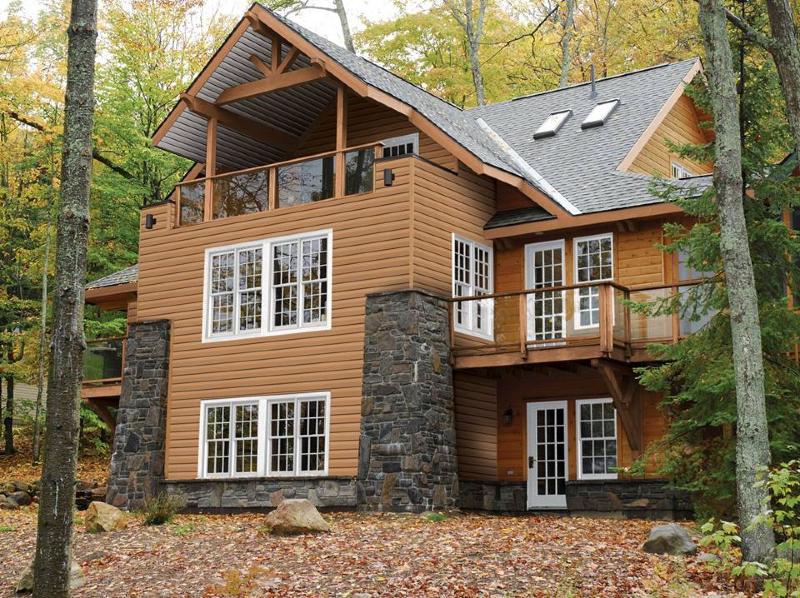
How to Decide on a Wood Siding Pattern
As a homeowner, you must make the right choices regarding your property’s appearance. And when it comes to wood siding, selecting the perfect pattern can make all the difference.
However, with the wide array of available options, how do you decide which is best for your home? Don’t worry; this guide will help you navigate the delightful journey of choosing a wood siding pattern.
ok8
The Things to Consider When Choosing a Wood Siding Pattern
Wood specie
When choosing a wood siding pattern, one crucial factor is the wood species itself. The type of wood you select can greatly impact its durability and maintenance requirements. It is, therefore, essential to choose wisely. Softwoods like pine, cedar, and redwood offer natural beauty but require extra care in sun-soaked or salt-air environments.
On the other hand, hardwoods such as teak are more resistant to these elements. Therefore, they require fewer upkeep activities. The downside, however, is that hardwoods often come with a higher upfront cost.
Above all, you should consult with local experts who can guide you on the best wood species for your specific climate and location.
Durability and Maintenance
Durability and maintenance are very important when selecting a wood siding pattern for your home.
Homeowners always seek products that can withstand the test of time, especially for integral components like siding. So depending on your location, you may need highly durable materials to endure severe weather conditions. Understanding the maintenance requirements of different siding options is crucial for maximizing longevity.
When considering durability and maintenance, you can choose a wood siding pattern that is easy to maintain. In this process, you’ll be able to prioritize a wood siding that delivers longevity and preserves the beauty of your home for years to come.
Price
Price is a crucial factor to consider when choosing a wood siding pattern for your home. It is very important that you set a budget for your siding project. Regardless of whether it’s generous or moderate, just ensure to set a budget.
After you’ve set a budget, it’s important to explore the siding options that align with your budgetary constraints. Remember that project estimates can vary based on factors such as the choice of contractors, materials, and the size of your house.
But when carefully considering the pricing needed to complete varying projects, you can ensure that whatever you choose stays within your budget.
Different Types Of Wood Siding Patterns and Profiles
Horizontal patterns
Horizontal wood siding patterns offer a classic and popular choice for homeowners. Within this category, there are three primary options to consider:
- Traditional Lap: This pattern features horizontal boards that are partially layered. Thus, they allow precipitation to roll off the surface of each board effectively.
- Dutch Lap: Similar to the traditional lap pattern, Dutch lap siding incorporates a groove at the top of each horizontal board. As a result, they add texture and visual interest.
- Beaded: Beaded siding introduces a distinctive touch with a “bead” at the bottom of each board. These beads create texture and enhance the overall appeal of the siding.
Overall, these horizontal patterns provide a timeless and visually pleasing appearance while offering protection against the elements. Choose the one that best complements your home’s style and personal preferences.
Vertical patterns
Vertical wood siding patterns offer a unique and eye-catching alternative to the common horizontal options. Two popular vertical patterns to consider are:
- Board and Batten: This traditional pattern features vertical boards with raised battens in between. The battens provide additional water protection and create appealing shadow effects when sunlight hits them. Board and batten siding is both durable and cost-effective. Thus, they are an excellent choice for those seeking a distinctive look.
- Panel Siding: Similar to traditional lap siding but vertically oriented, panel siding consists of flush, vertically layered panels. This pattern creates a sleek and contemporary appearance. Hence they often offer a uniformly flat surface that can add a modern touch to your home’s exterior.
By exploring vertical patterns, you can give your home a unique and stylish character that sets it apart.
Shake patterns
Shake patterns offer a unique and visually appealing option for wood siding. They add character and charm to your home’s exterior.
Here are some popular shake patterns to consider:
- Round shakes: These have rounded ends overlapping to create texture and depth. They create a cozy and quaint appearance and are often used beneath roof overhangs or alongside horizontal siding for visual distinction.
- Square shakes: Square shakes maintain a traditional look, with square-shaped pieces layered row by row. They blend well with other siding types.
- Staggered shakes: Staggered shakes create a visually intriguing effect by placing the shakes in a staggered arrangement. This creates a break-up pattern that provides contrast and definition to your exterior.
- Octagonal and hexagonal shakes: Shakes with octagonal or hexagonal shapes add a geometric aesthetic to your home.
- Mitered corners: Shakes with mitered corners offer a unique textured surface where the tips of the corners are cut off.
- Fish scales: The fish scale shake pattern has a less rounded appearance, providing an organic and textured look to your home’s exterior.
Conclusion
At Longhouse Cedar, we offer a wide range of high-quality cedar shakes and siding options to suit your preferences. Our products are crafted with durability and visual appeal in mind. Contact us today to explore our offerings and bring your siding vision to life.
